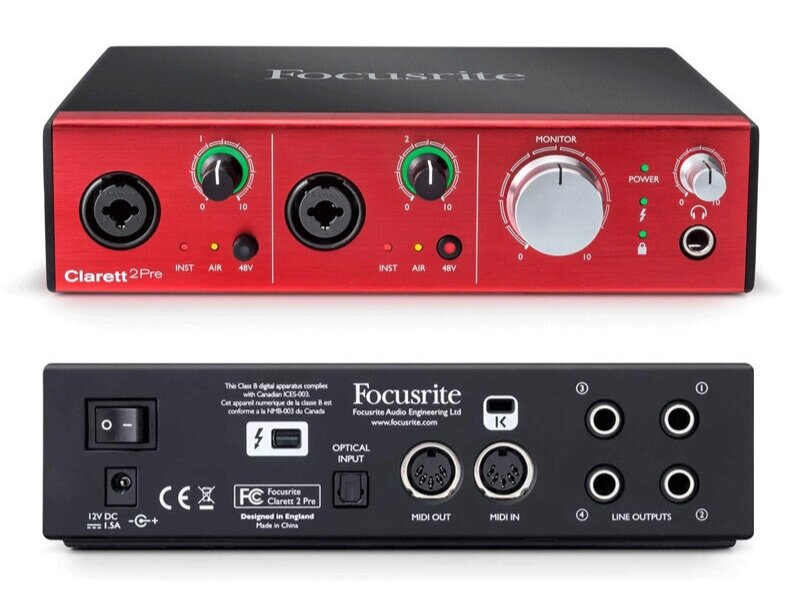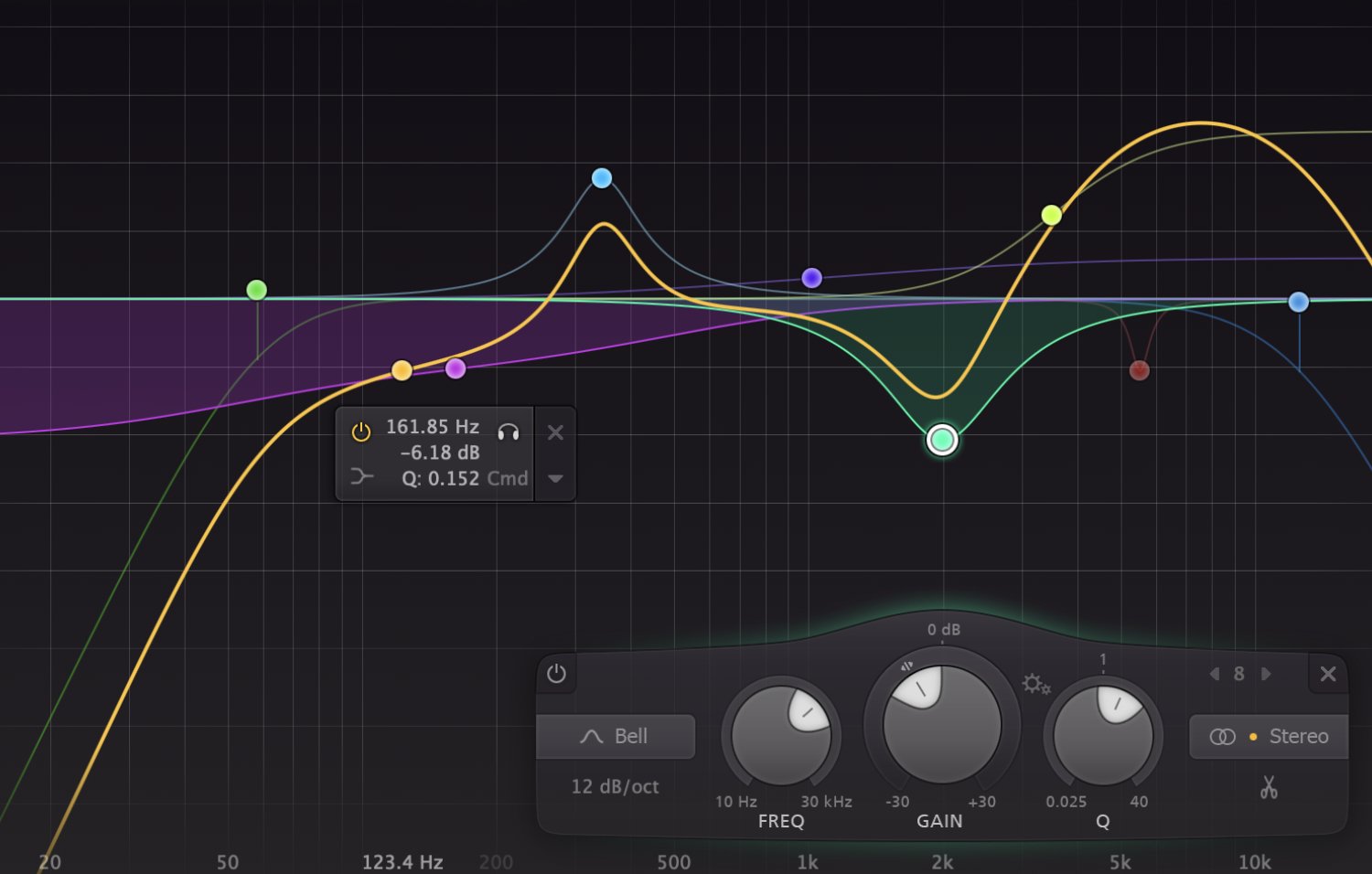Best Audio Interfaces for Classical Guitar
If you need help on choosing microphones, check out my Best Microphones for Classical Guitar guide.
Spotify: 20/21st Century CGT Playlist
Most of the Audio Interfaces on the market today are decent enough for the casual recording of the classical guitar; most have a relatively clean AD/DA conversion and clean sounding mic-preamps. Still, the choice of the best audio interface for you is non-trivial.
The main reason is that you don't want to change interfaces every couple of years, so picking one that will serve you well for several years is essential. Also, the requirements of the classical guitar recordist are pretty specific, so you want to make sure that you pay mainly for the features that you will use.
How much money should you spend on an Audio Interface?
Building a home studio, or a mobile recording setup is possible even without spending a lot of money. My advice regarding interfaces is to buy the best microphones your budget allows, then consider monitoring (either monitors or headphones, or both) and with the rest of your money buy any interface you can afford.
That's not to say that more high-end interfaces are overpriced and have nothing to offer. The differences are there; in preamp and conversion quality, headphone output quality, additional features, and overall performance. But they are much subtler in comparison to the front- and back-end of the signal chain; microphones and monitoring.
A couple of crucial factors.
Driver stability and reliability of the interface are of great importance; cheap (sometimes even expensive) interfaces with badly written drivers can cause a lot of trouble. Some issues are small annoyances; audio glitches during playback, requiring random restarts for them to function correctly and unresponsiveness. But, there are potential audio glitches and crashes that could ruin the recordings. Imagine recording for a day at a wonderful European old church, and when you return home to find out that there are glitches and artefacts in most of your takes.
Then, while it's true that almost any interface should work for any genre; Classical guitar recording is a niché within a niché. Most brands build their interfaces around popular styles, with features are developed and marketed towards those. Mic-preamp emulators, DSP plugins, transformer colour, character enchanters, etc. are not useful in the context of the classical guitar recording. Ideally, what you'd want is a compact interface with two or four high-gain/low-noise microphone preamps, mastering grade conversion, high-quality headphone outputs and rock-solid performance.
In every category, there are at least two options; one for absolute sound quality and stability for the price range (usually with only two mic-preamps), and one with added versatility for more elaborate setups (with four or more mic-preamps).
I almost only mention specs on the low-end tiers because that level of performance has been brought to budget interfaces just recently. You shouldn't worry about specs with higher-end models, as they are all excellent, and small differences won't matter.
Lastly, for the most part, I included audio interfaces also with portability in my mind, as for most of us, recording on-location is crucial.
If you need more assistance, don't hesitate to contact me.
Entry Point - Under $250
The best bare-bones interface on the market in this category is the MOTU M2; driven by an ESS Sabre chip for the conversion it delivers 120dB dynamic range on the main outputs, while the mic-preamp of -129dBu EIN is excellent for delicate classical guitar recordings. The sound of the interface is clean, the drivers are decent, and the unit feels sturdy and well processed for the price.
If you plan to use more elaborate microphone techniques, two mic-preamps will not be enough; in that case, the MOTU M4 will add more flexibility and will grow with you as it has two line inputs. You'll still need to buy a hardware preamp unit.
Alternative - the Audient iD14 MKII is a little older, but still holds up very well. Above-average conversion and mic-preamps for the price and slightly more coloured sounding that the MOTU. Drivers are average, but it offers decent monitoring features and looks great on the desk. There is also a digital input for up to eight extra inputs.
B2-Tier - Under $500
I'm not sure it is an upgrade to the M2 and M4 interfaces, but if you like the red colour the Focusrite Clarett 2pre USB has everything you need to record classical guitar with two microphones; low-noise (-129 dBu EIN) microphone preamps and 119dBs of dynamic range. The Clarett sounds clean and has low distortion. Additionally, a switchable analogue model of the transformer-based ISA mic-pre is available for a sweeter sound.
Alternative - If two mic-preamps are not enough for you, take a look at the Steinberg UR44C. The build is very sturdy, and the drivers are solid. The sound is good, albeit less clear that Clarett's both in the preamps and converters.
B1-Tier - Under $1000
As with microphones, things start to become interesting in this category. The RME Babyface Pro FS is an excellent sounding interface with the most stable performance, slick looks and top processing. The two mic-preamps are very clean, low-noise and low-distortion; the conversion is very transparent.
Additional ADAT-in and two line inputs allow for great versatility. I wouldn't hesitate using it on any production (in fact, I use one for location recordings). RME's support is also second to none.
Alternative - if you seek a more analogue sound, the SPL Crimson 3 is an outstanding interface and the only one (to my knowledge) operating at +/- 34 Volt for levels up to + 22 dBu. The preamps are fantastic and sound very organic; the headphone output with the adjustable crossfeed allows for a speakers-like experience. The presentation is rich and warm; less analytical than the RME. The controls feel very solid and sturdy.
Alternative - if four onboard mic-preamps are a must, the Arturia Audiofuse Studio is hard to beat. It packs excellent conversion, very clean and high-gain mic-preamps, intuitive controls, and many features to satisfy everyone. The drivers are average.
Alternative - slightly cheaper, the Focusrite Clarett 4pre USB is a solid performer with four mic-preamps and excellent clarity. The converters are transparent, the drivers are average.
A-Tier - Under $2000
Metric Halo ILN-2 3D
The Metric Halo ULN-2 3D has two low-noise and high-gain microphone preamps that rival many outboard preamps. With 72dB of gain, they can even drive Ribbon microphones. Stability and conversion are also excellent, as is the support from Metric Halo. S/PDIF-in and -out allow for expandability and add to the longevity of the interface.
Alternative - The RME Firewire UCX packs a lot of connectivity and expandability, with two fine mic-preamps, while remaining compact and portable. It is a first-rate interface with unparalleled stability, reliability and support. You can pair it with an RME Quadmic II for four additional clean mic-preamps or something like a DAV BG-1 for a slightly more coloured alternative.
Alternative - for more inputs and on-board preamps, the Apogee Quartet is a great alternative. Its sound is slightly warmish, but top quality. Drivers and performance are also above average, and if you use Logic Pro X, the integration is pretty neat.
Alternative - if you prioritise compactness for location recordings, take a look at the Sonosax SX-M2D2. A fantastic sounding interface at lilliputian dimensions; two mic-preamps with 135dB dynamic range and superb conversion. The headphone output is also first-class; and the best of all, it can run on a rechargeable lithium-ion battery. I'm not too fond of the mini-XLR connectors.
S-Tier - Under $3000
At this budget, dedicated Converters and Preamps would make more sense. That is unless you take a look at the Prism Sound Lyra 2. It doesn't have a lot of extra features, but its converters and mic-preamps are top-class. It is well built and compact for on-location recordings. If you already have a pair of DPA's or similar microphones, two inputs are enough for you, and you like the simplicity of an all-in-one unit; look no further.
Alternative - if you need more mic-preamps the Metric Halo LIO-8 3D 4-Preamp offers four (or eight) pristine high-gain (90dB!) ones, along with mastering-grade conversion and fantastic stability. It's a full-rack unit, so portability is not the best, but otherwise, it is a top-quality audio interface.
Outliers
Here are some interfaces that didn't make it to my recommendations.
Focusrite's Scarlett range of interfaces are not terrible at the entry-level, but MOTU and Audient outperform them in everything that matters.
The Universal Audio Apollo interfaces are great if you plan to use the UAD plugins emulations. But, for classical guitar recordings, there is no use in them, so why pay more for things you don't use? Similarly priced interfaces sound better, and you are not becoming a prisoner of the UAD ecosystem.
The RME Fireface UFX II and UFX+ are gorgeous units, but feature-wise they are overkill for classical guitar recordings. If you do more chamber/orchestral work, these RME interfaces are an industry standard for classical recordings; they offer the best drivers/stability and excellent sound clarity.
RME's achievement is the marriage of excellent hardware and the best software to drive the hardware. On the other hand, Merging created a full-featured and exceptional sounding interface (plus many more), the Anubis; but the software is so bad that makes it hard to recommend it until they take care of the issues.
The Arturia Audiofuse Rev2 is a compact interface with very good conversion, high-gain preamps and lot's of other features; they even found space for a USB Hub. But, it connects to your computer with micro-USB, why Arturia?
Classical Guitar Tones Buyer’s Guides - Quick Access
- Best Microphones for Classical Guitar
- Best Audio Interfaces for Classical Guitar
- Best Studio Monitors for Classical Guitar
Managing Classical Guitar Tones is costly; hosting, shipping gear, time, etc. Help this site stay alive and allow me to create more content like this.

















